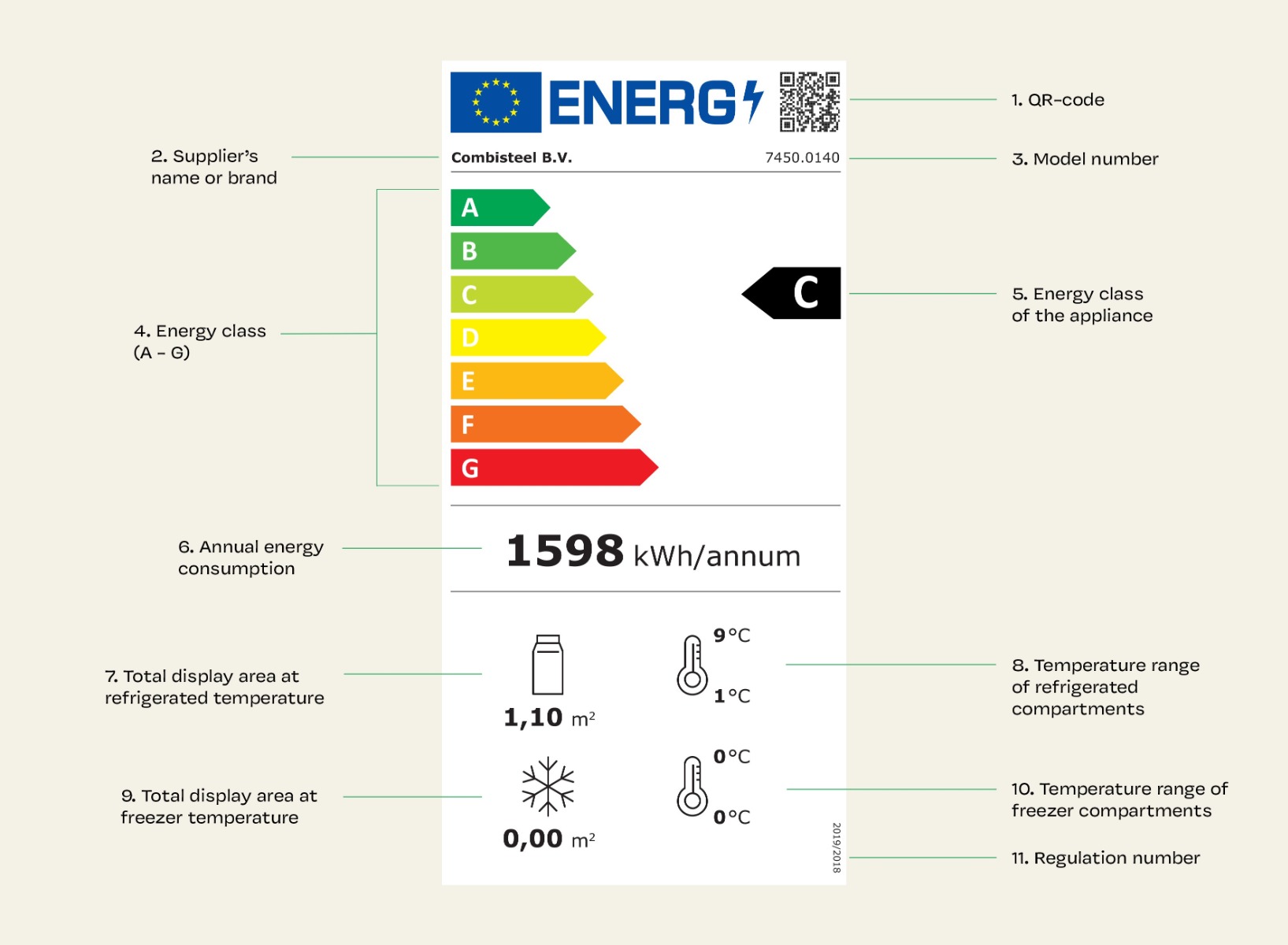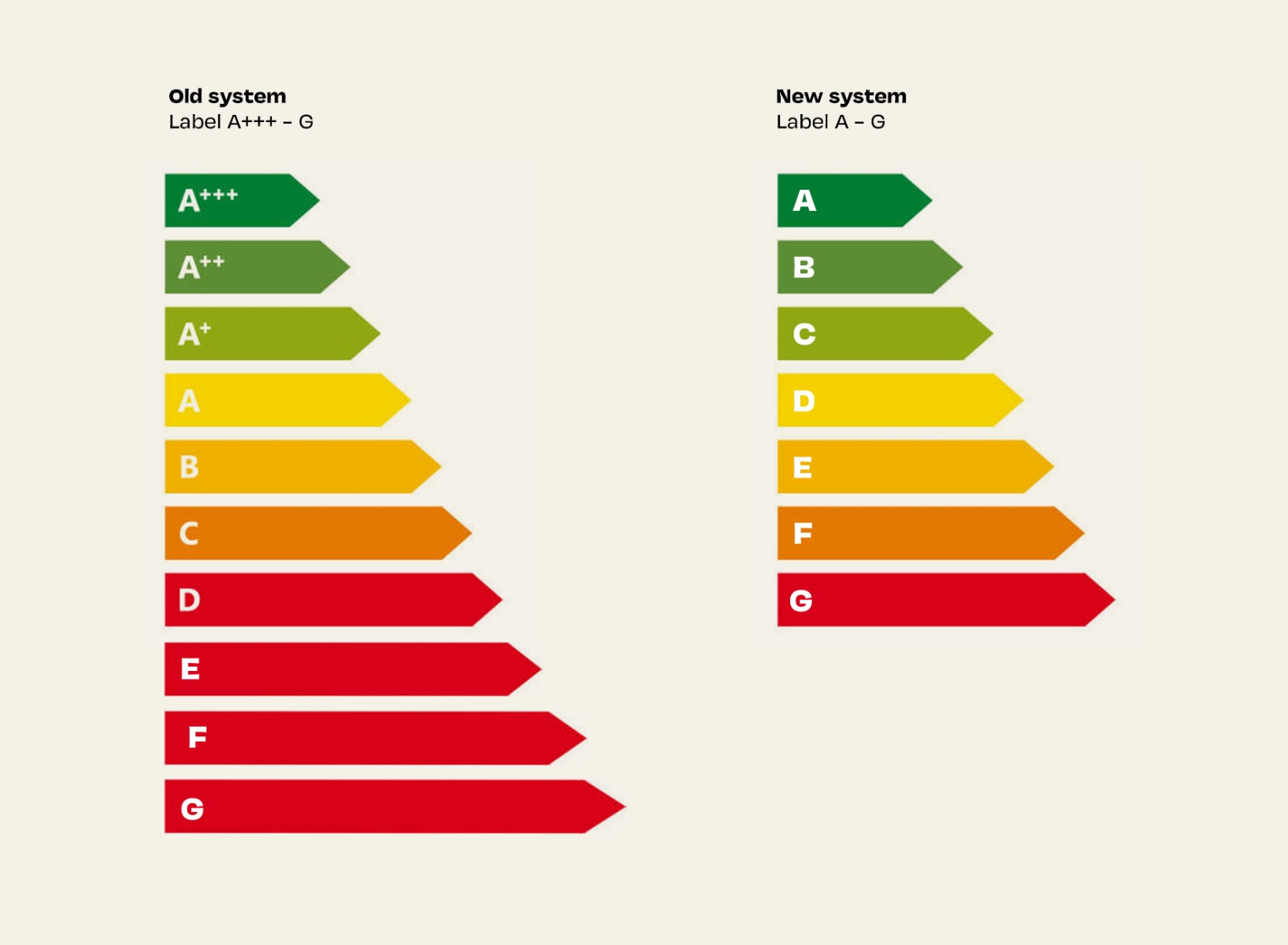Energy label
Quick Order
Please make sure to login before using the Quick Order feature.
Energy Labels: What Does It Mean for You
Energy efficiency is playing an increasingly important role in the selection of professional kitchen and refrigeration equipment. To encourage this, the EU introduced energy labels in 2016. These labels make it easier to compare appliances in terms of energy efficiency and provide insight into performance and consumption. For the professional market, energy labels are now mandatory for, among others, refrigeration and freezing equipment.
What Does the Energy Label Show?
An energy label provides the following information 1:
- QR code – allows you to look up the product directly in the European EPREL database with official product information.
- Supplier's name or brand – the manufacturer or brand of the appliance.
- Model number – the unique identifier for the product.
- Energy efficiency scale (A to G) – the efficiency class of the appliance, with A being the most efficient.
- Energy class – the actual rating of the appliance on the scale, e.g., C or D.
- Annual energy consumption (kWh/year) – calculated under standardized test conditions.
- Total display area at refrigerated temperature – the combined area of all refrigerated compartments in square meters (m²).
- Temperature range of refrigerated compartments – the highest and lowest measured temperature in the chilled compartments.
- Total display area at freezer temperature – the combined area of all freezer compartments in square meters (m²).
- Temperature range of freezer compartments – the highest and lowest measured temperature in the freezer compartments.
- Regulation number (2019/2018) – the EU legislation on which the label is based.
- Noise level (dB) – some labels also include the appliance’s noise level.




New Type of Energy Label
Currently, two types of energy labels are in circulation:
- A to G (new system)
- A+++ to G (old system)
Both labels are officially valid but differ in structure, which can cause confusion when comparing products. For example, the new label C roughly corresponds to the old A+++ rating.
To provide clarity, we use the A to G label as standard. This new type of label was introduced in March 2021 2 to avoid confusion caused by the plus signs. Products still displaying the old label will gradually be converted to the new scale, creating a single clear standard so you always know exactly what to expect.
Comparison, Climate Class and Testing Methods
Energy labels are based on standardized factory measurements. When comparing appliances, it is important that they are tested within the same climate class (the ambient temperature under which the appliance was tested). An appliance rated at a certain label in climate class 3 may receive a different rating in climate class 4.
Our professional appliances are generally tested in climate class 4 (30°C), and some even in class 5 (40°C), giving you a realistic view of performance.
In addition to the climate class, the testing method also plays an important role. Depending on the applied standard, the same appliances can receive different energy classes. For example, there are separate test standards for beverage coolers and for supermarket display refrigerators, each with different ambient conditions and load requirements. As a result, one and the same appliance can show a different rating and a different energy consumption on the label, depending on the chosen method.
Operational Use
The energy label provides a good indication of an appliance’s efficiency, but it is always based on standardized factory tests under ideal conditions. Actual energy consumption may vary. Factors affecting this include:
- Frequency of opening and closing the appliance
- Ambient temperature and humidity
- How the appliance is used and maintained
You can find the energy labels on the product pages under the heading 'Downloads'.
If you have questions about energy labels, please contact us.